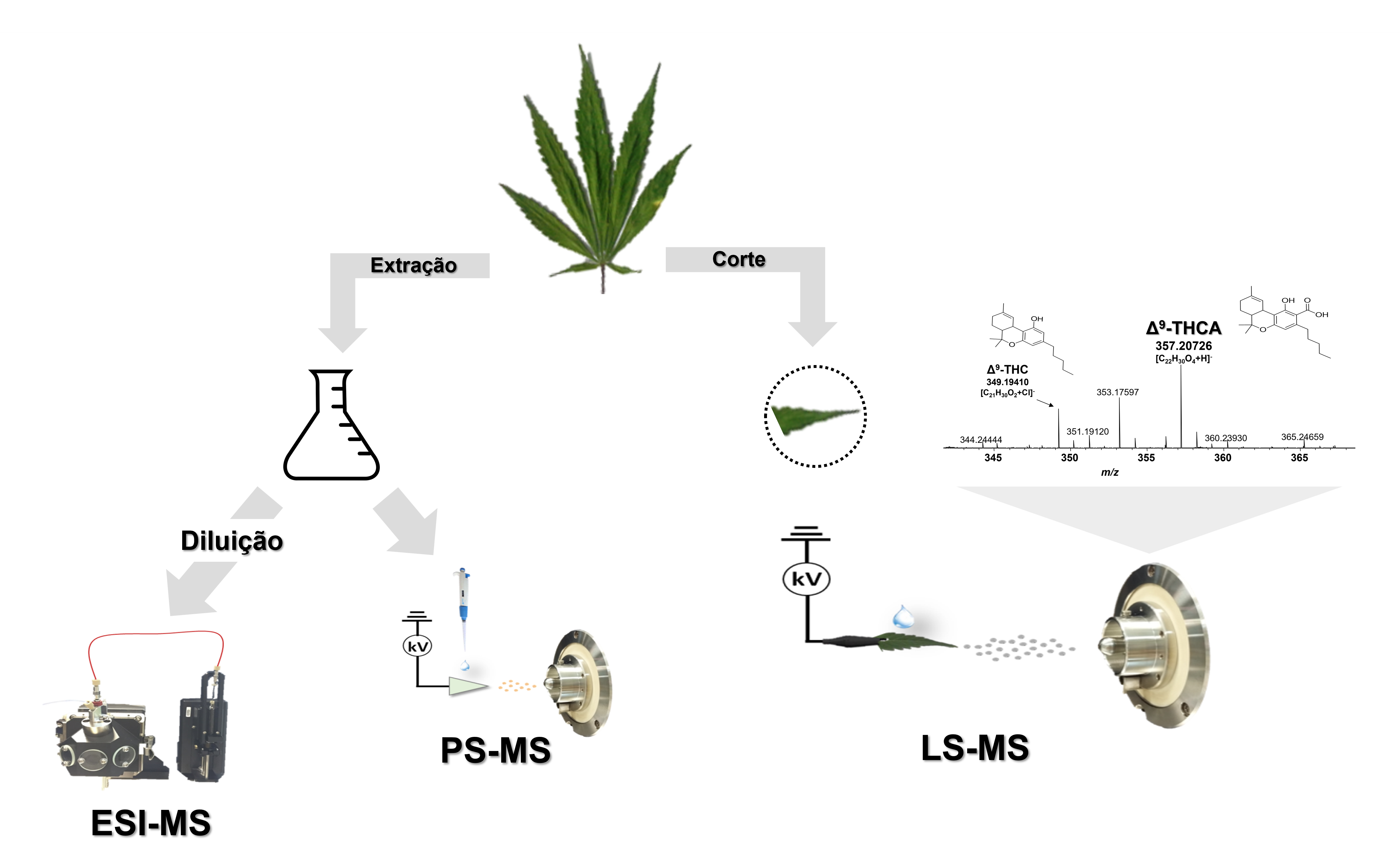ANÁLISE DE FOLHAS DE CANNABIS SATIVA L. POR ESPECTROMETRIA DE MASSAS AMBIENTE
DOI:
https://doi.org/10.36524/ric.v9i3.2184Palavras-chave:
canabinoides, espectrometria de massas ambiente, leaf spray ionizationResumo
A planta Cannabis possui uma relação muito próxima com a sociedade há vários anos, seja devido ao seu uso cultural e/ou medicinal, como no uso de seus produtos derivados (como maconha e haxixe) para fins recreativos. Independente da finalidade do uso, a rápida e eficiente identificação da Cannabis deve ser alcançada com, por exemplo, a detecção de compostos da sua principal classe; os canabinoides. Nesse sentido, o presente trabalho apresenta uma alternativa de análise rápida e com reduzido efeito de matriz utilizando técnicas Ambient Mass Spectrometry: com as fontes paper spray (PS) e leaf spray ionization (LS), e comparando-as com a técnica Atmospheric Pressure Ionization (API): utilizando a fonte electrospray (ESI). Todas as fontes mostraram-se hábeis no processo de ionização da classe alvo: canabinoides, no entanto, uma maior intensidade relativa, e menor efeito de supressão iônica foram observados com uso da técnica de LS-MS, indicando-a como uma ferramenta promissora para rápida detecção de canabinoides diretamente do tecido vegetal, extinguindo etapas de extração e diluição requeridas nas outras fontes apresentadas.

Downloads
Publicado
Edição
Seção
Licença
Copyright (c) 2023 Revista Ifes Ciência

Este trabalho está licenciado sob uma licença Creative Commons Attribution-NonCommercial-NoDerivatives 4.0 International License.
Autores que publicam nesta revista concordam com os seguintes termos:
- Autores mantém os direitos autorais e concedem à revista o direito de primeira publicação, com o trabalho simultaneamente licenciado sob a Licença Creative Commons Attribution que permite o compartilhamento do trabalho com reconhecimento da autoria e publicação inicial nesta revista.
b. Autores têm permissão e são estimulados a publicar e distribuir seu trabalho online (ex.: em repositórios institucionais ou na sua página pessoal) a qualquer ponto antes ou durante o processo editorial, já que isso pode gerar alterações produtivas, bem como aumentar o impacto e a citação do trabalho publicado (Veja O Efeito do Acesso Livre).


